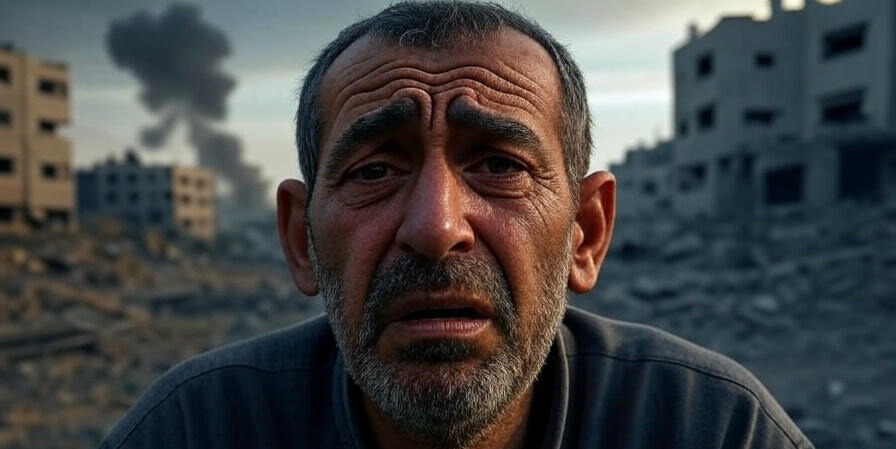Gaza Under Fire: Israeli Attacks Intensify While Aid Agencies Issue Urgent Famine Warnings
| Key Information | Details |
|---|---|
| Current Situation | Israeli military operations continue across Gaza Strip |
| Humanitarian Crisis | International aid agencies warn of severe famine conditions |
| Civilian Impact | Palestinian civilians face acute food shortage and displacement |
| International Response | Global calls for immediate humanitarian access and ceasefire |
The ongoing conflict in Gaza has reached a critical juncture as Israeli military operations continue across the Palestinian territory while international humanitarian organizations raise alarm about deteriorating conditions that could lead to widespread famine among the civilian population.
Current Gaza Crisis: Military Operations and Civilian Impact
Recent military activities have significantly impacted civilian areas throughout the Gaza Strip, affecting essential infrastructure including hospitals, schools, and residential neighborhoods. The escalation has forced thousands of Palestinian families to seek shelter in overcrowded displacement centers, creating additional humanitarian challenges.
Key Areas Affected by Recent Operations
Northern Gaza, central Gaza City, and southern regions including Khan Yunis have experienced intensive military operations. These areas house some of Gaza’s most densely populated neighborhoods, where civilian casualties continue to mount as families struggle to find safe refuge.
The situation has been particularly challenging for medical facilities, with several hospitals reporting severe shortages of medical supplies, fuel for generators, and clean water. Healthcare workers are working under extremely difficult conditions to provide emergency care to injured civilians.
Famine Warning: Aid Agencies Sound Alarm Over Food Security Crisis
International humanitarian organizations, including agencies working with the United Nations, have issued urgent warnings about the deteriorating food security situation in Gaza. The combination of restricted access, damaged infrastructure, and ongoing conflict has created conditions that experts warn could lead to famine-like circumstances.
Critical Food Shortage Statistics
| Population Segment | Food Insecurity Level | Immediate Needs |
|---|---|---|
| Children under 5 | Acute malnutrition risk | Therapeutic nutrition support |
| Pregnant women | Severe nutritional deficiency | Prenatal nutrition programs |
| Elderly population | Limited food access | Special dietary requirements |
| General population | Food shortage | Basic food supplies and clean water |
Aid workers report that many families are surviving on minimal food rations, with children showing signs of malnutrition. The limited availability of fresh produce, protein sources, and clean drinking water has created a public health emergency that requires immediate international intervention.
International Response and Humanitarian Access Challenges
The international community has called for immediate humanitarian corridors to allow aid delivery to Gaza’s civilian population. However, security concerns and ongoing military operations have severely limited the ability of humanitarian organizations to reach those in need.
Efforts to Address the Crisis
Several international bodies are working to coordinate emergency relief efforts. The United Nations Relief and Works Agency continues to operate displacement centers despite challenging conditions, while other humanitarian organizations are seeking safe passage for medical supplies and food aid.
Regional governments and international partners are exploring various mechanisms to ensure humanitarian aid reaches Gaza’s most vulnerable populations, including potential maritime corridors and coordinated land-based delivery systems.
Impact on Gaza’s Infrastructure and Essential Services
The ongoing conflict has severely damaged Gaza’s already fragile infrastructure. Power grids, water treatment facilities, and communication networks have been significantly impacted, creating additional challenges for both civilians and humanitarian workers attempting to provide assistance.
Essential Services Under Strain
Healthcare systems are operating at minimal capacity due to fuel shortages, medical supply constraints, and damage to facilities. Educational institutions remain closed, affecting hundreds of thousands of Palestinian students whose academic year has been disrupted.
Water and sanitation services are critically compromised, raising concerns about potential disease outbreaks in overcrowded displacement centers. Sanitation experts warn that poor hygiene conditions combined with malnutrition could lead to preventable deaths, particularly among children and elderly residents.
Looking Forward: Calls for Peace and Humanitarian Solutions
As the crisis continues, there are growing calls from the international community for sustainable solutions that address both immediate humanitarian needs and longer-term stability. Diplomatic efforts are underway to establish mechanisms for regular humanitarian aid delivery while working toward broader conflict resolution.
The situation remains fluid, with humanitarian organizations continuing to document conditions and advocate for civilian protection under international humanitarian law. The focus remains on ensuring that essential services, medical care, and food supplies reach Gaza’s most vulnerable populations.
For the latest updates on this developing story, visit our breaking news section or return to our homepage for comprehensive coverage of regional developments.
This article provides analysis based on reports from international humanitarian organizations and aims to present factual information about the ongoing humanitarian crisis in Gaza. Kashmir News remains committed to balanced reporting on regional conflicts and their impact on civilian populations.


